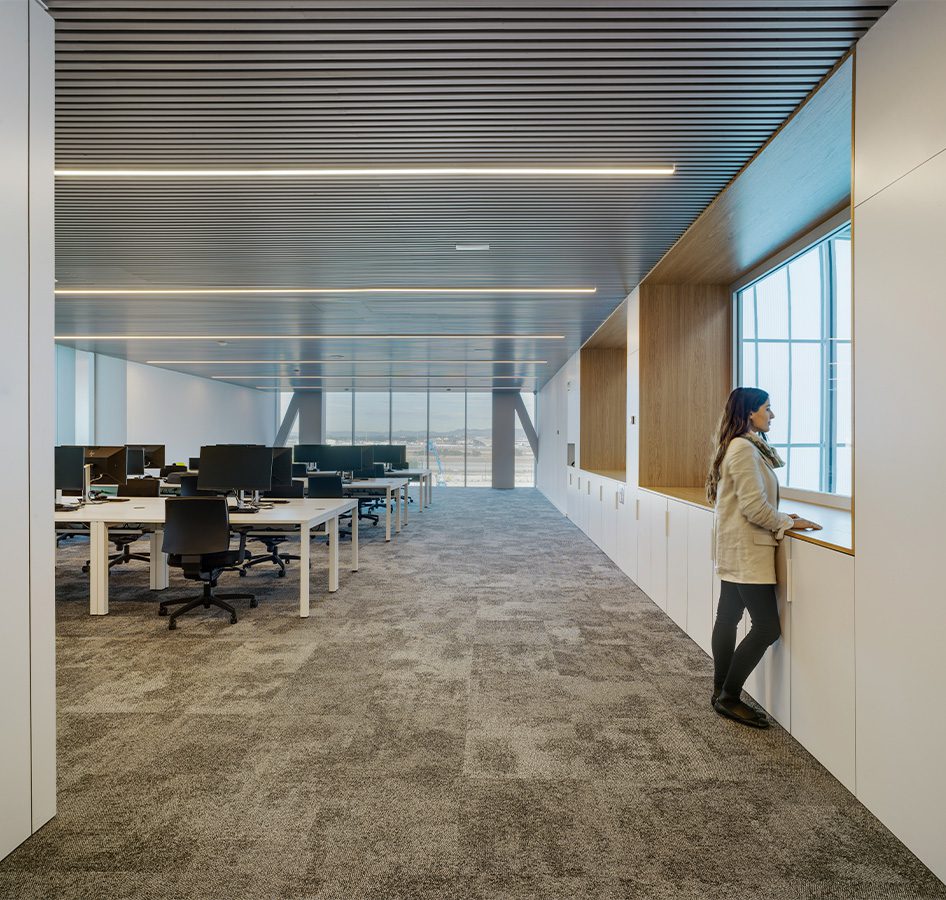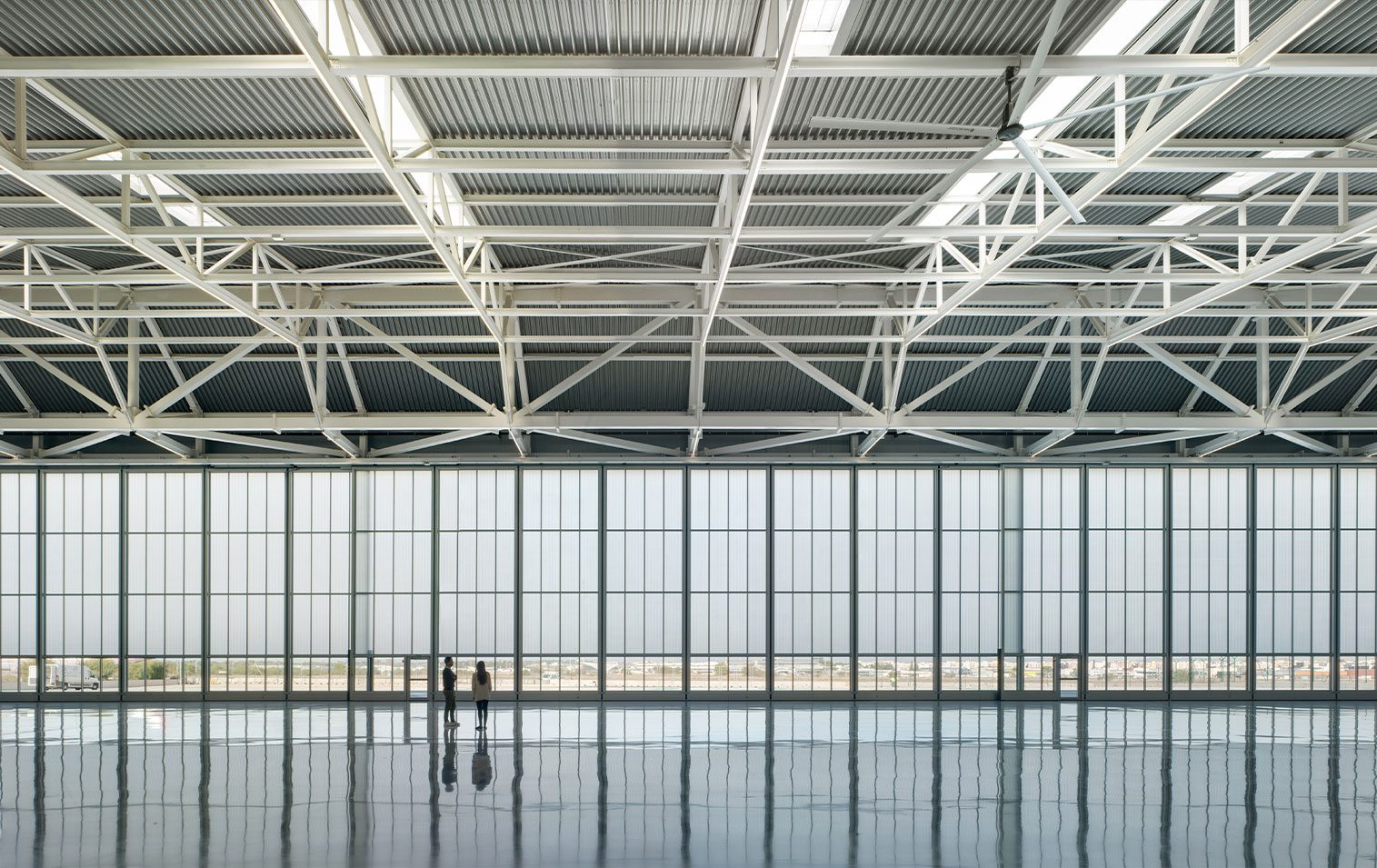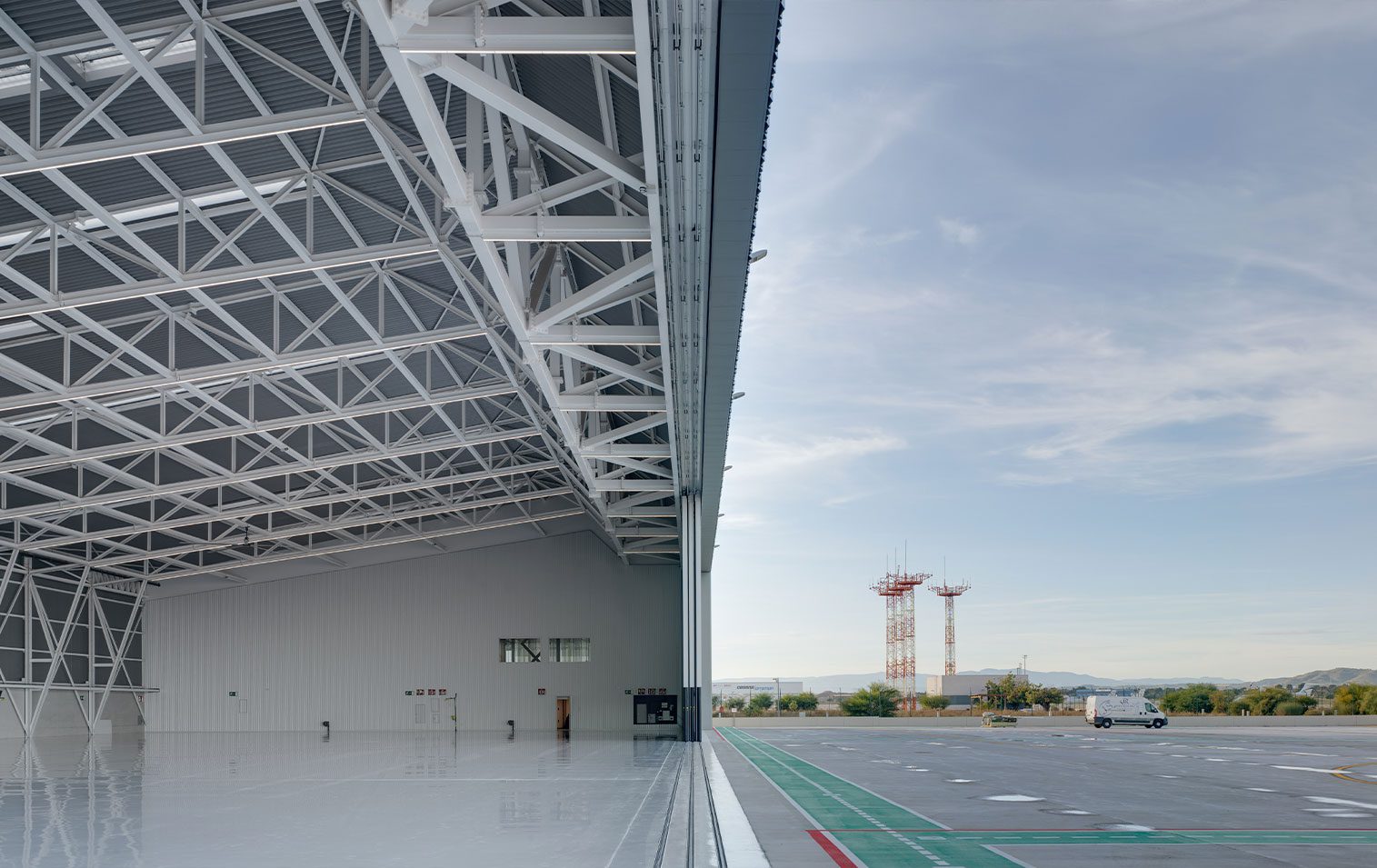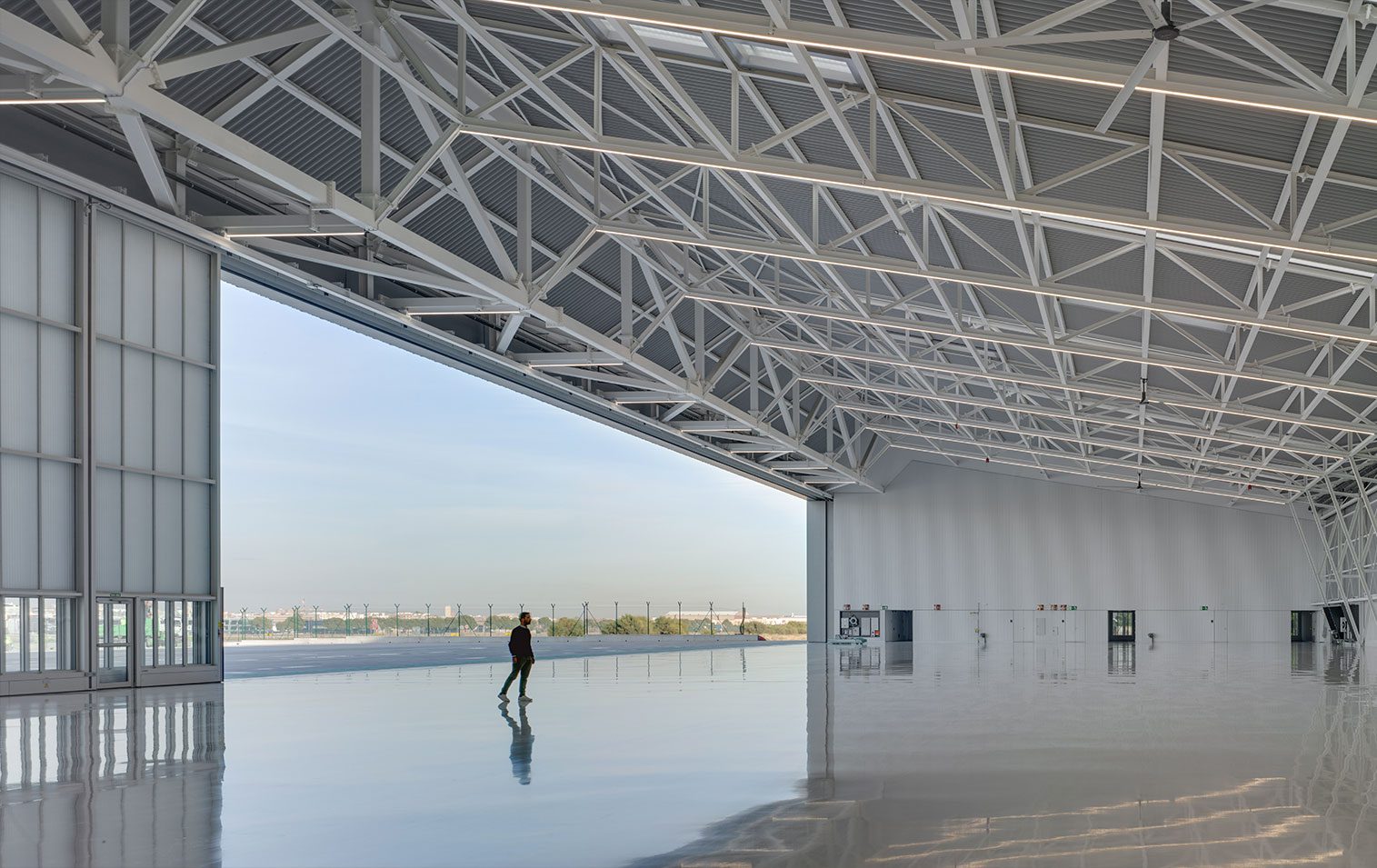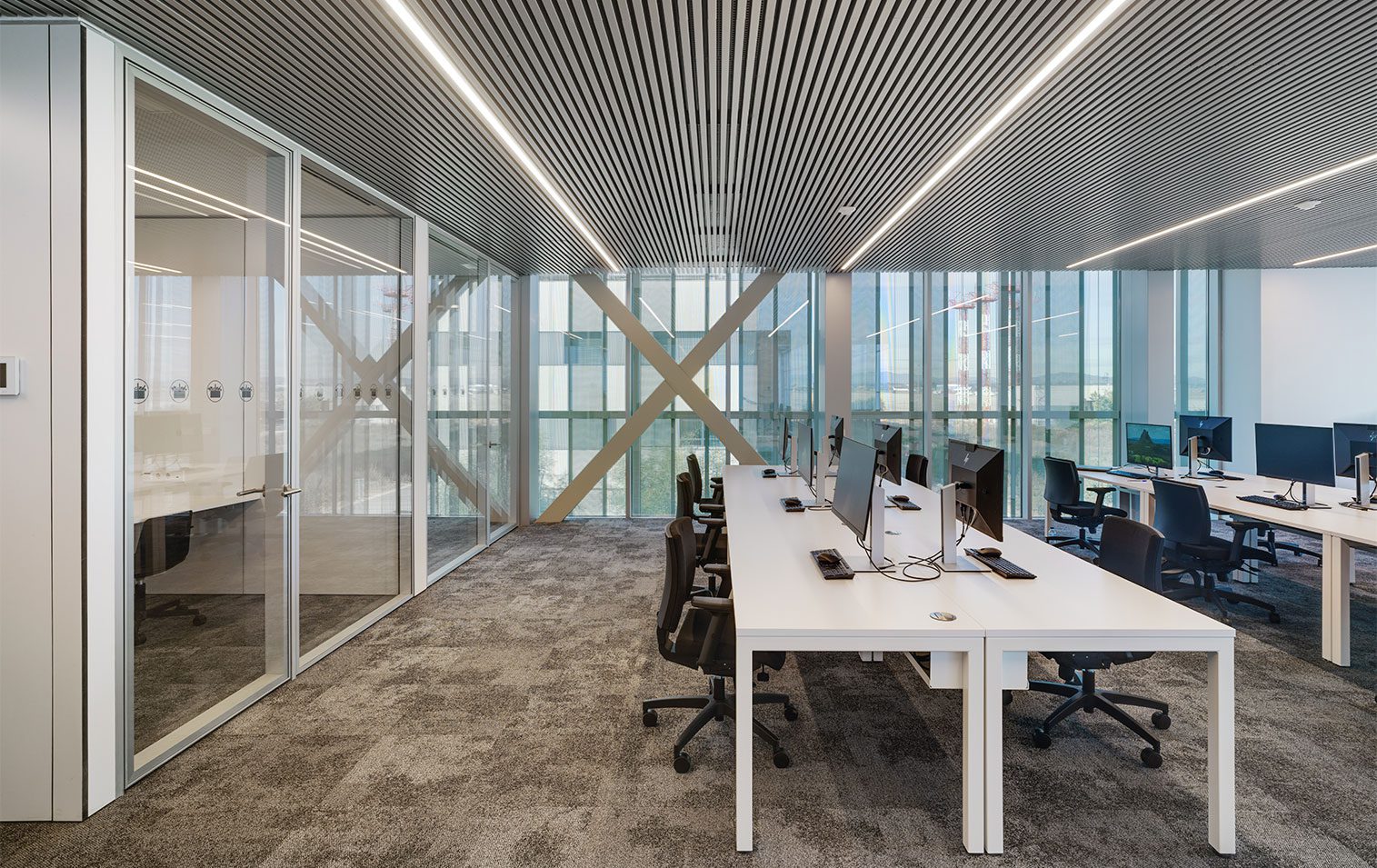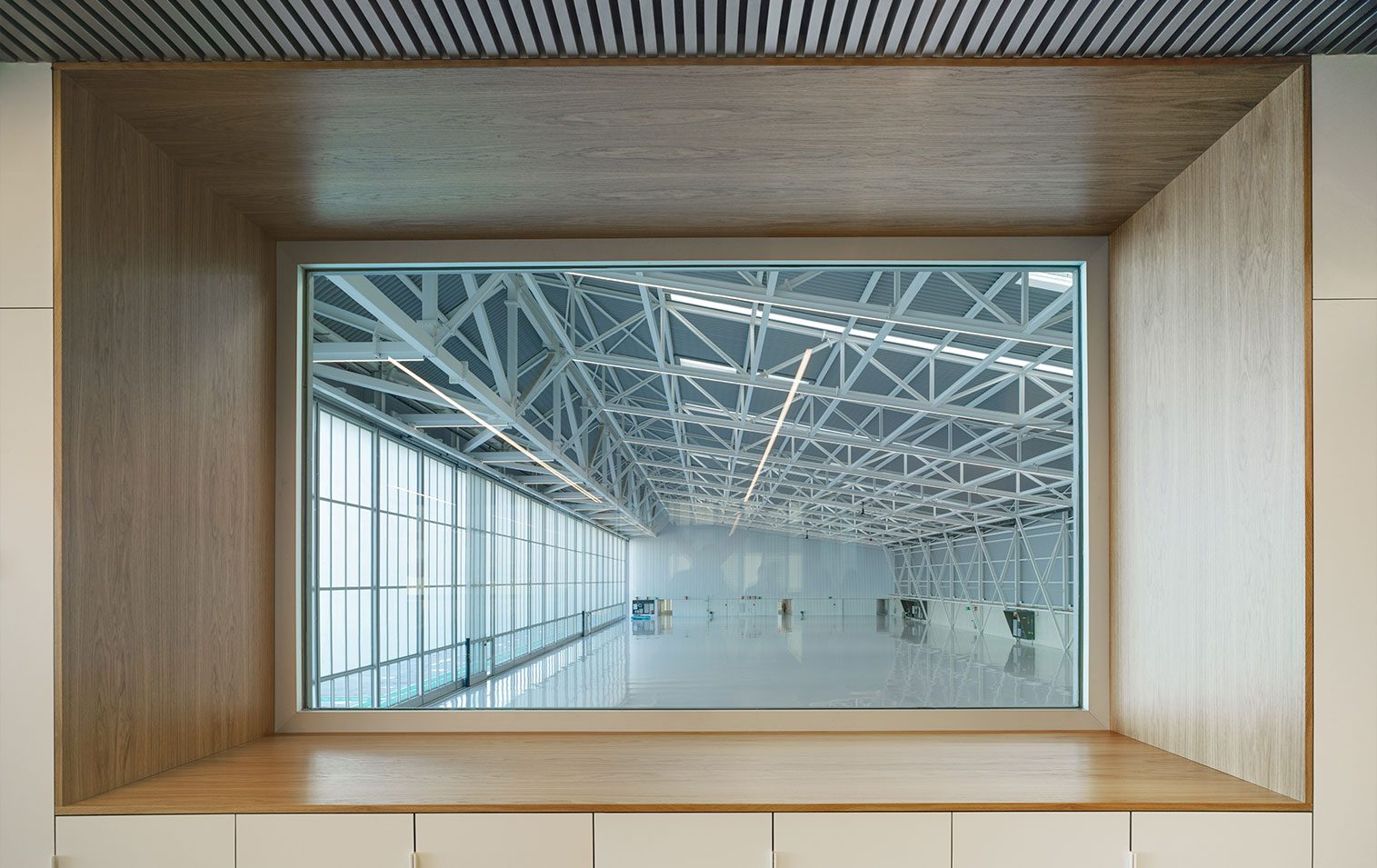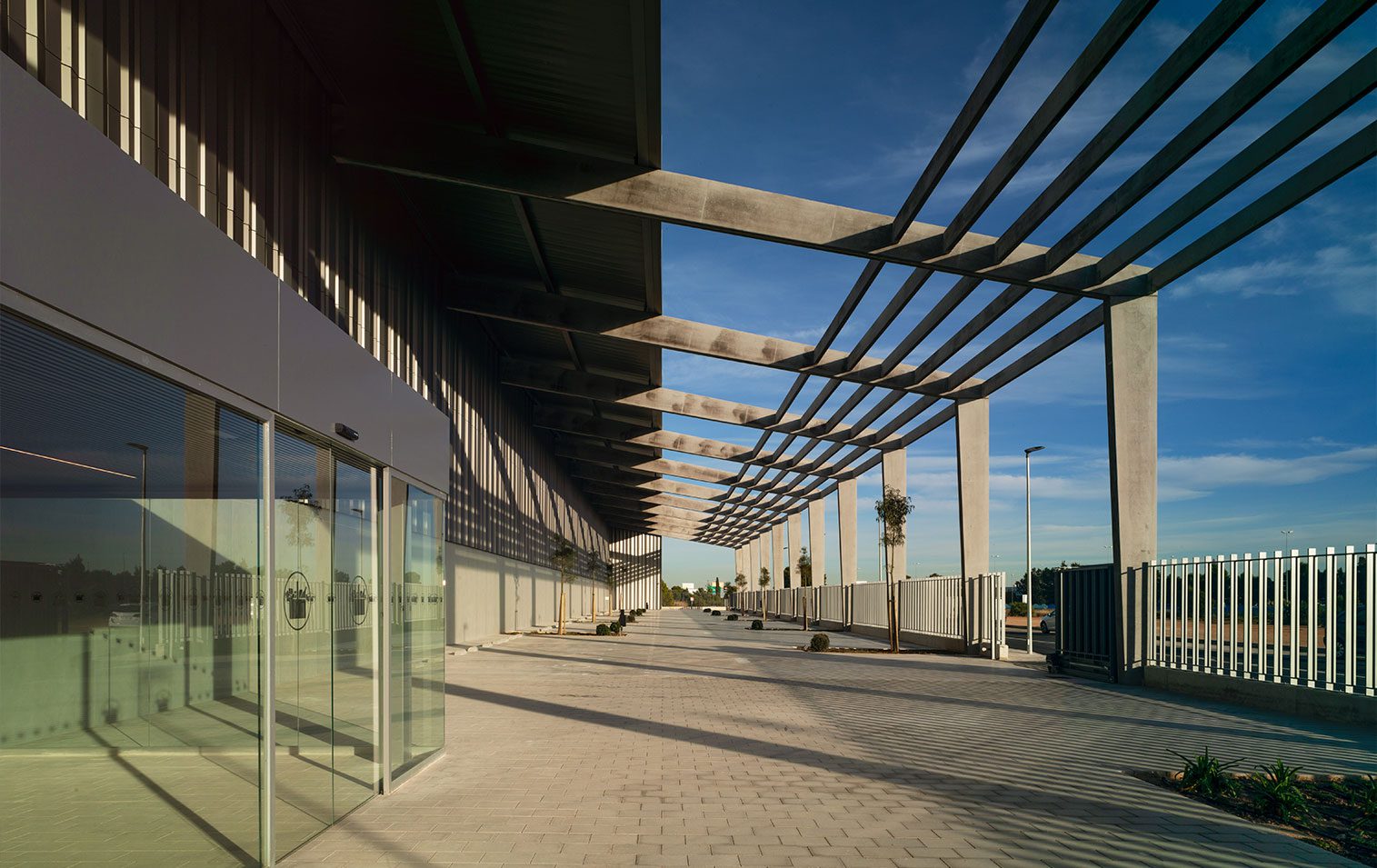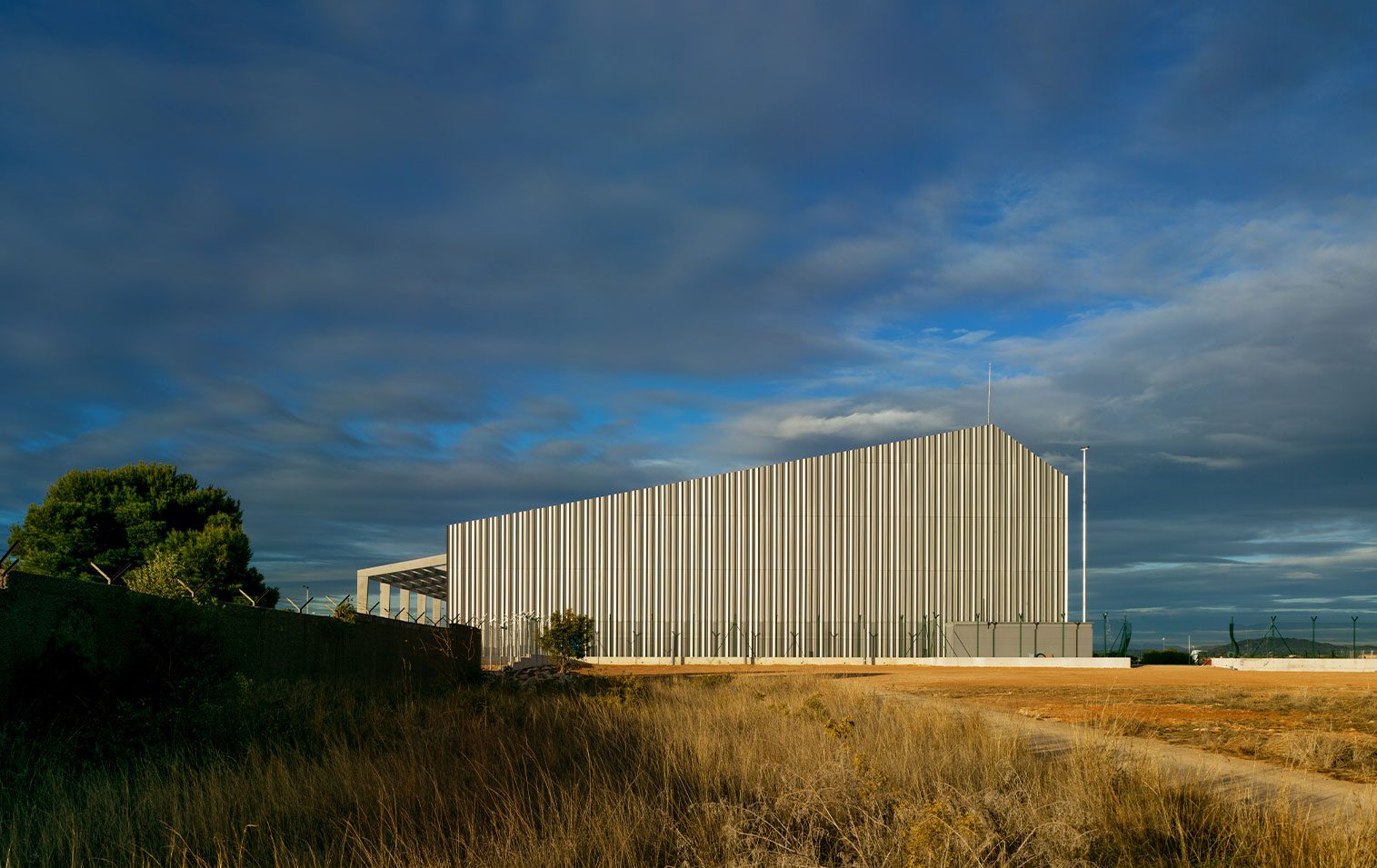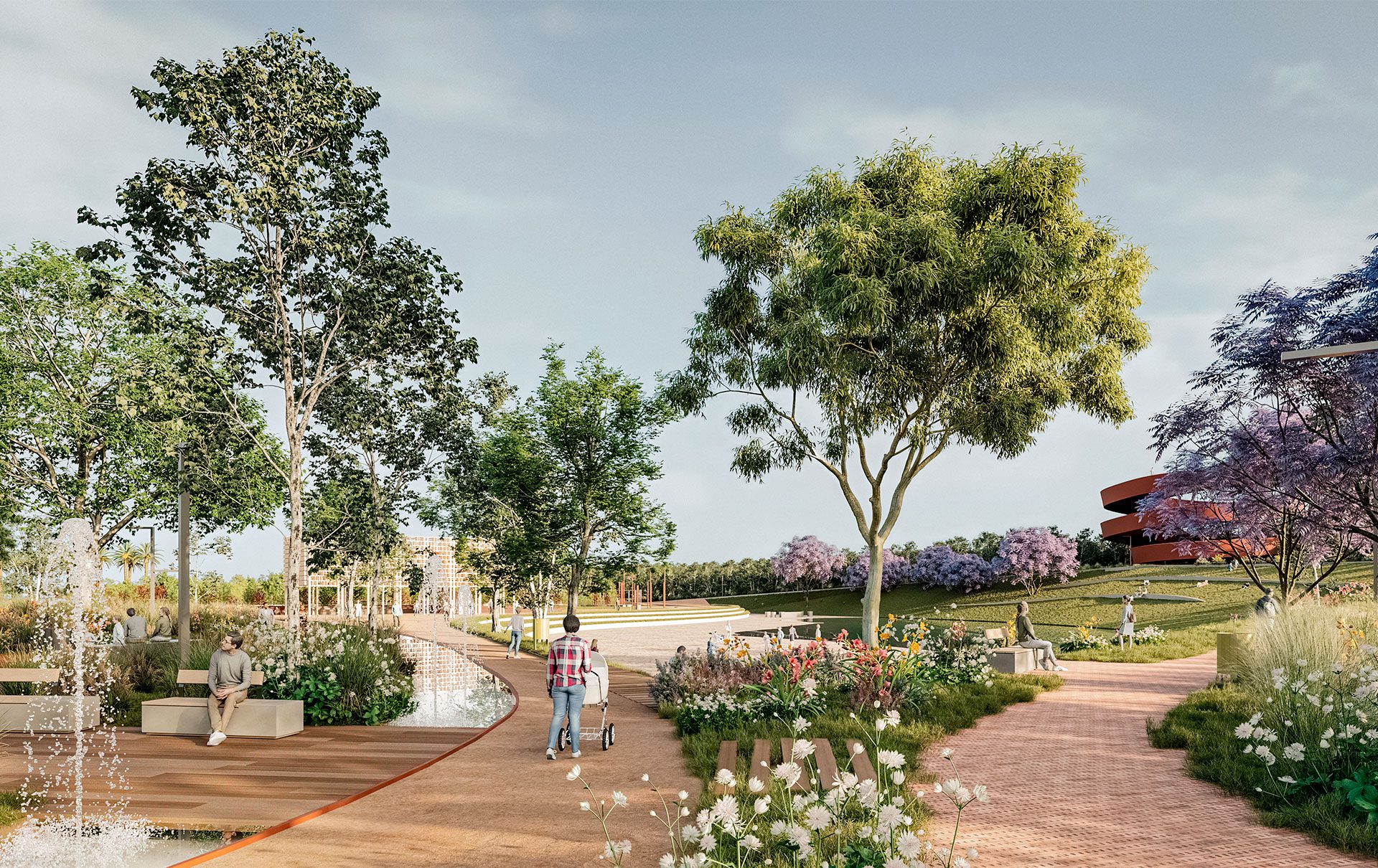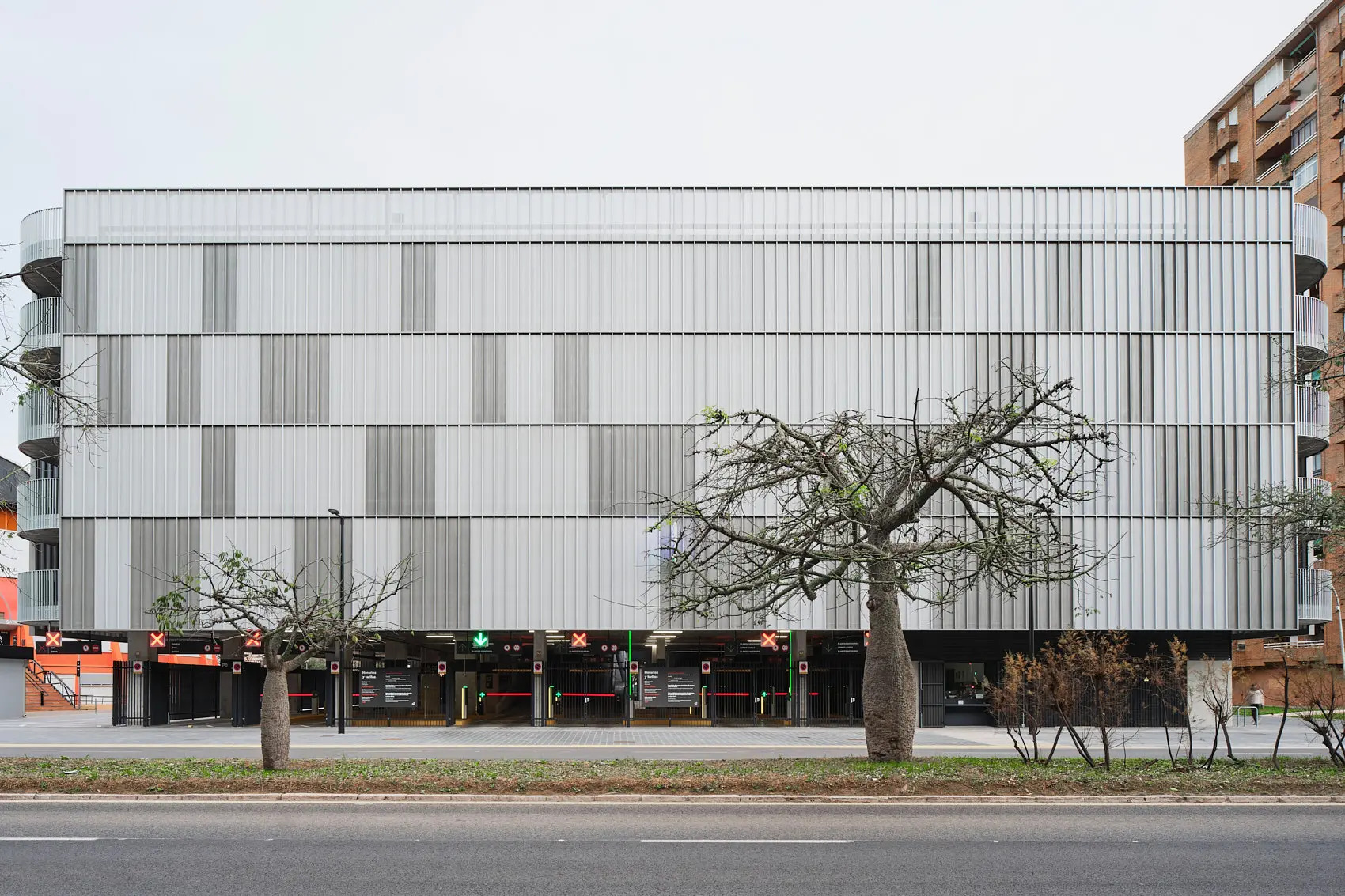Private Hangar
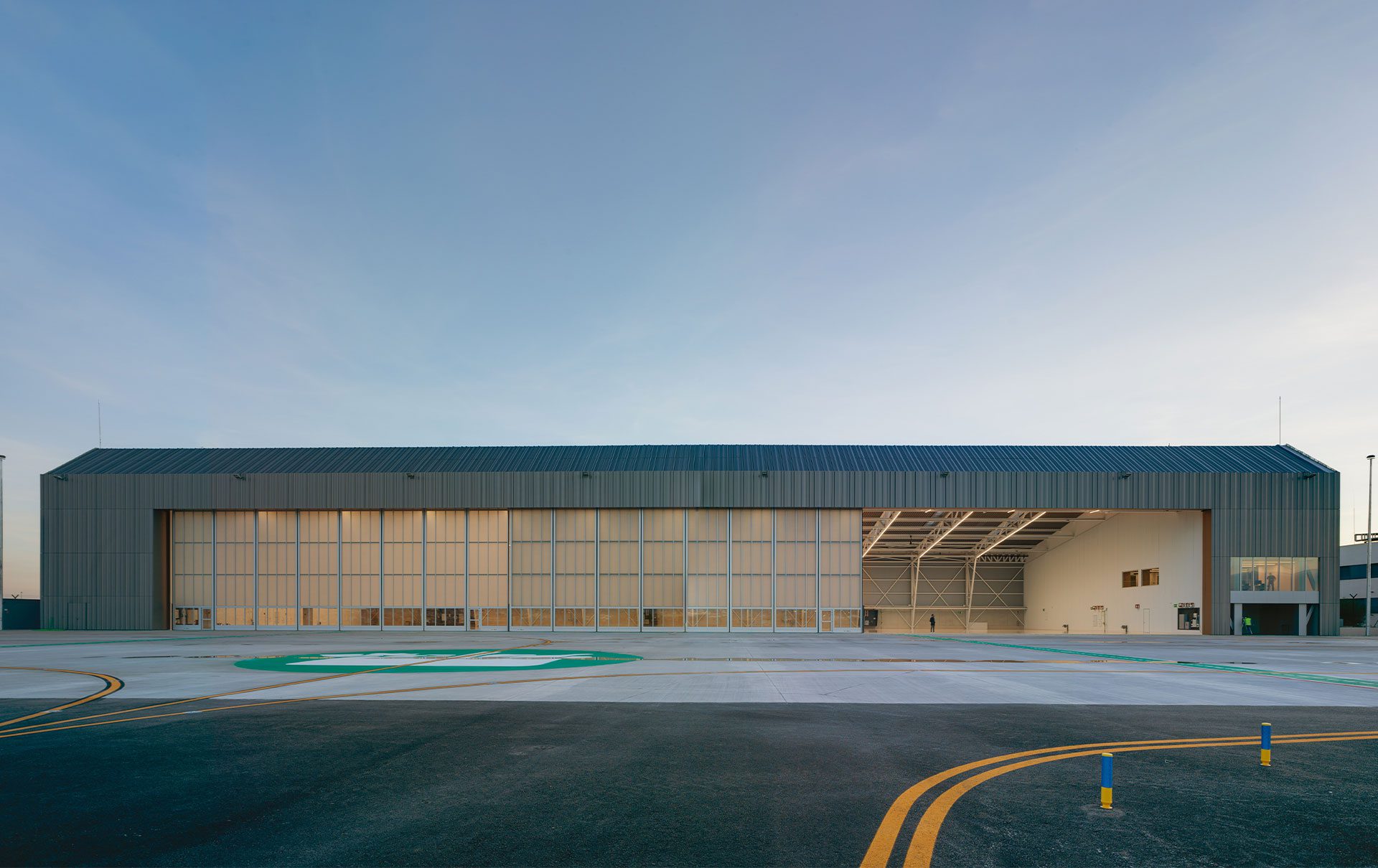
A unitary industrial look and, at the same time, dynamic and variable that changes according to light and time.
Awards
- Recent Architecture Exhibition in Valencia 2020-21-22
Challenge
The main challenge of this project has been structural, requiring both a floor plan and a clear 100-meter frontal opening to address the functional requirements and demands of the space.
STRATEGY
The project for this private terminal proposes a clear and emphatic geometry defined by a single volume (120 x 47 meters) in which the exterior metallic materiality that envelops the building unifies its various functions and structures. This skin, which in some areas is micro-perforated to allow light to enter the interior spaces, gives the project a unitary industrial appearance that is at the same time dynamic and variable, changing according to the light and the time of day.
The functional program is divided into two zones:
The administrative use zone, which houses the offices, is distributed over two floors between which double heights and visuals are generated.
On the other hand, the hangar area will have space for aircraft storage and warehouses.
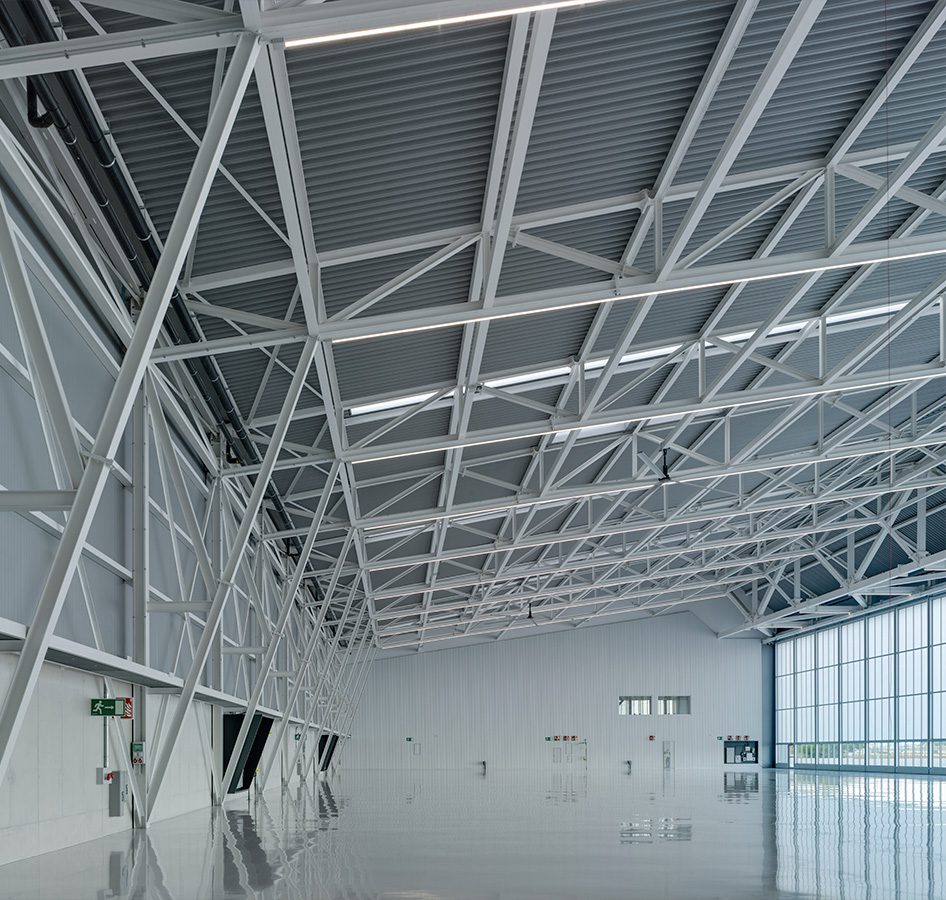
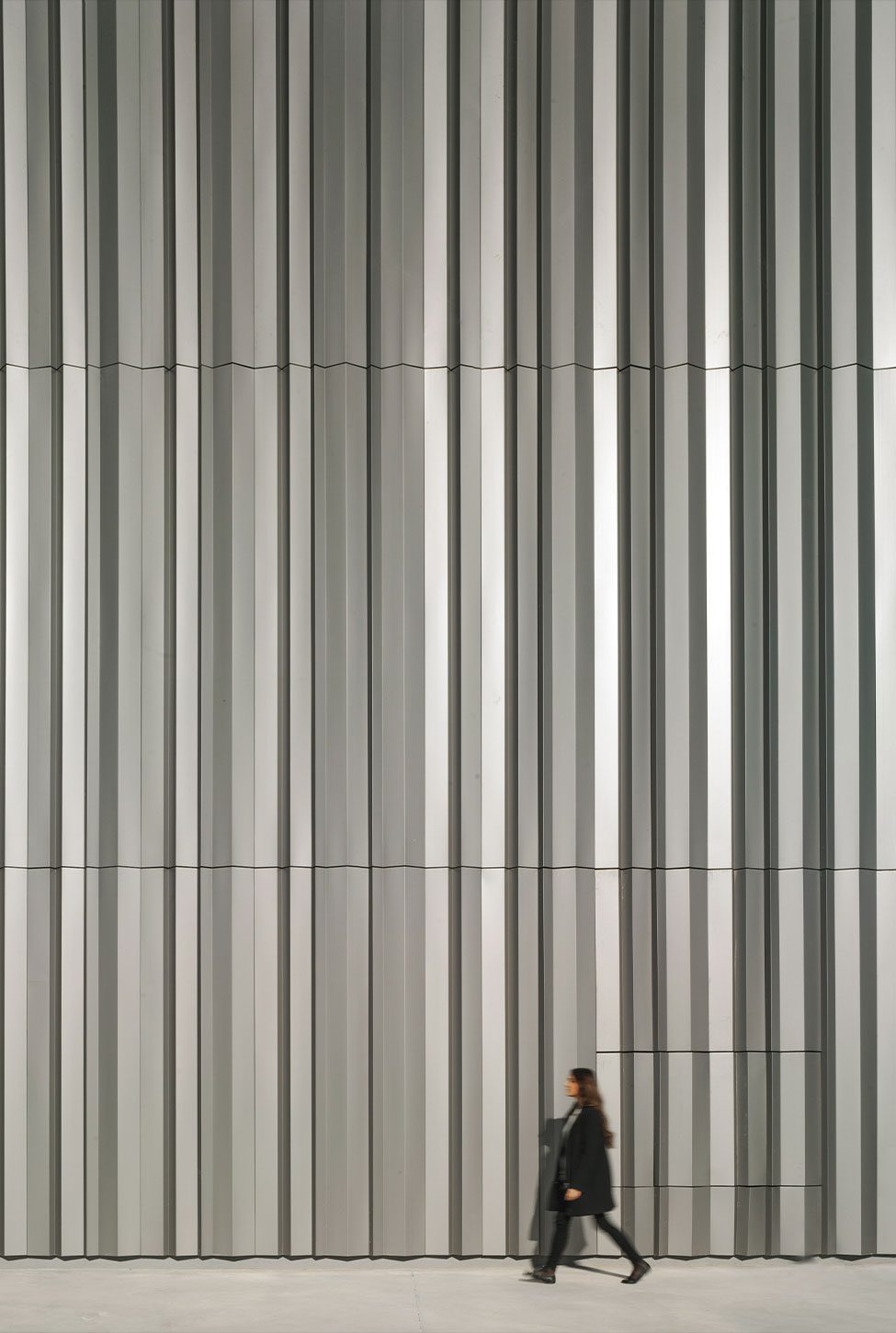
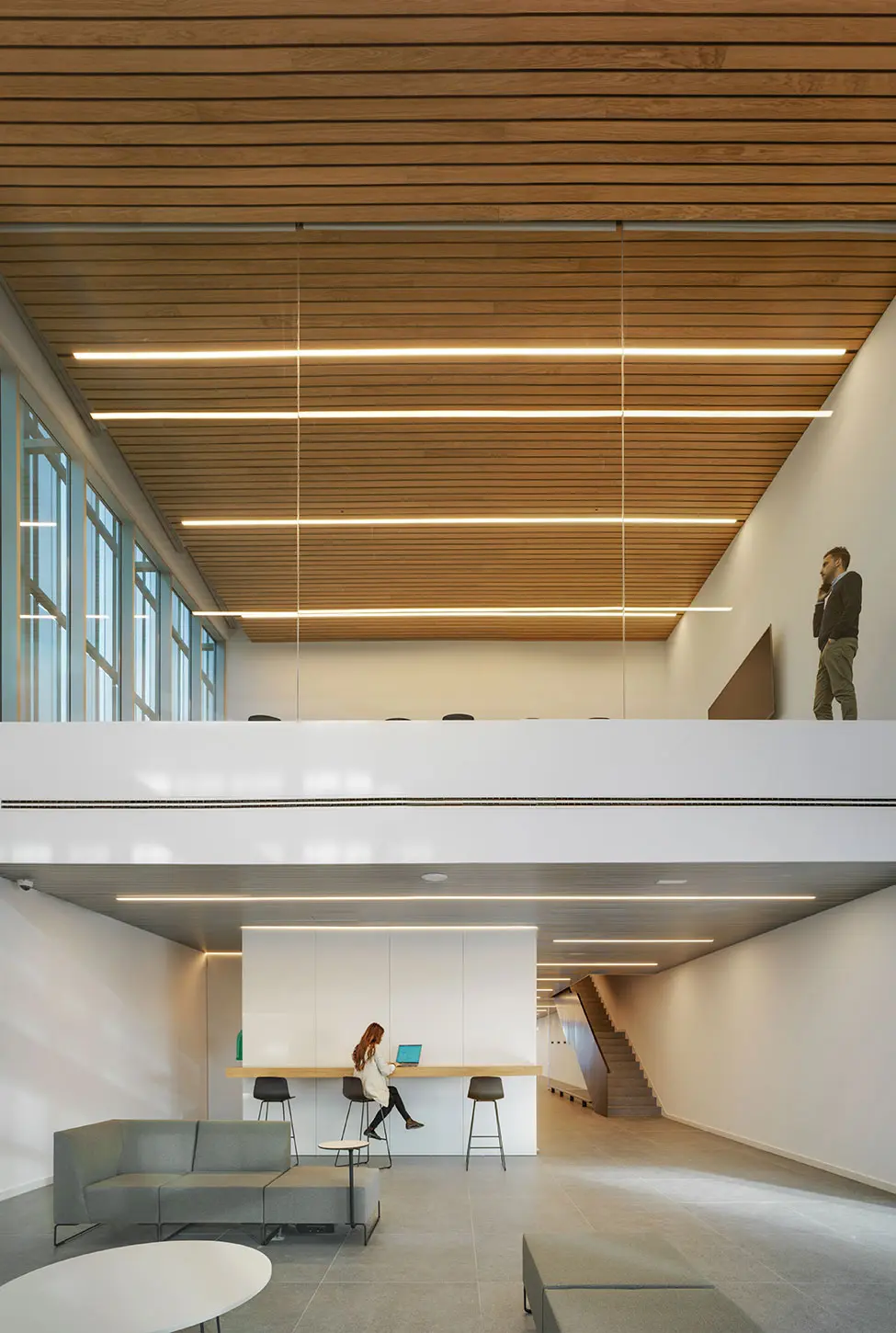
SOLUTION
The design of the structure has been one of the great challenges of the project and the element that has most conditioned the final appearance of the building. The structure is resolved by means of rigid metal gabled porticos with trusses of variable depth. In the same way, two supports are proposed to support a large-edged metal truss that will allow a free front opening of 100 m to adapt to the requirements and functional demands of the space.
In terms of sustainability, the project, despite its surface area and volume, has a reduced impact since the hangar area (3794.14 m2) does not require climatic conditioning. The natural ventilation of this space is achieved through the strategic installation of three fans, avoiding air stratification in winter and reducing the thermal load in summer.
As for the materiality, in the industrial use area, metallic finishes and exposed structure have been chosen, thus achieving an industrial look more in line with its use. In the administrative use area, a warmer materiality has been chosen through the use of wood, as well as open false ceilings and carpeting to meet the acoustic and functional needs of these spaces.
The result is an architecture of a compact character that responds to the complex technical and programmatic requirements that a project of these characteristics requires.
